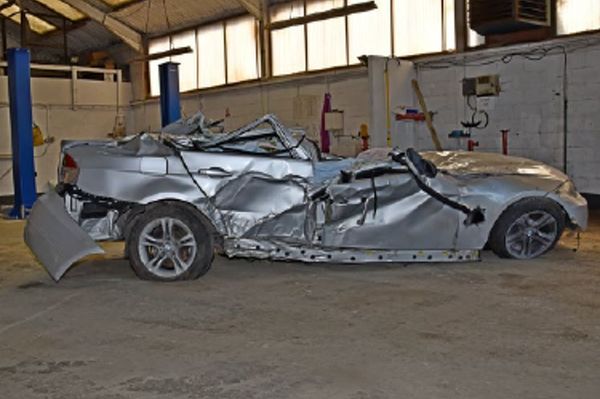Jumping on the trampoline and laughing with her older sister, it's hard to believe Mila, a lively four-year-old, is living with a life-threatening genetic disease.
"We try and make it work and make it normal and fun, but it's hours of treatments, physiotherapy, nebulisers and inhalant drugs," her mum Jaimee Sewell said.
"She needs medication every time she just eats a snack … that's normal for Mila."
Mila was diagnosed with cystic fibrosis aged just one, after experiencing lung failure in hospital, and is now reliant on intense doses of medication to manage the condition.
Ms Sewell, from Rockhampton in central Queensland, said realising she may outlive her daughter was tough.
"Like any parent with a child who's given a chronic illness, you grieve the life they were supposed to live, so you've got to come to terms with that," she said.
A relatively new treatment could offer Mila a better quality of life in the near future, but the drug is financially out of reach for her family.
At an annual cost of about $250,000 to $300,000, the drug was largely unaffordable until last year when the federal government added Trikafta to the Pharmaceutical Benefit Scheme for people over 12 years old.
Ms Sewell and other advocates are calling for that age bracket to be dropped to six years old, so children like Mila can access it affordably in the next few years.
"It'll make a massive difference, she'll still very much have cystic fibrosis, but it won't shorten her life," she said.
"If we can get her on Trikafta I don't have to think about the possibility of outliving her one day. It's a game changer."
Medication unaffordable
According to the federal government, Trikafta works by improving the flow of chloride and water in patients who have a certain genetic defect and helps improve lung function and breathing.
Cystic Fibrosis Australia CEO Jo Armstrong said the drug was a triple-combination therapy and the "closest thing to a cure" people with the condition had.
"At the moment, for parents of children that have cystic fibrosis that are aged under 12, If they wanted access to this life-changing treatment drug, they'd be paying upwards of [about] $30,000 a month," Ms Armstrong said.
She said last year's listing meant the drug went from costing tens of thousands of dollars each month, to about $40 a month once subsidised.
"There were at least 20 other countries in the world that have Trikafta available and subsidised for children, ages six and upwards," Ms Armstrong said.
"At least" 500 children in Australian were waiting to access the medication, she said.
In November the Pharmaceutical Benefits Advisory Committee (PBAC) recommended dropping the age patients could access the subsidised treatment to six to 11 year olds.
A spokesperson for federal health minister Mark Butler said the government was working with the company behind the drug, Vertex, to "move as quickly as possible" to make it available for the younger age group.
But the government could not give a clear timeframe on when that might happen, to the dismay of advocacy groups wanting a solid deadline.
"After a PBAC recommendation for a new medication, it is typical that there is a timeframe of discussions between the government and the pharmaceutical company," Ms Armstrong said.
"The challenge that we have here is we don't know how long this time is … and we're waiting in limbo, not knowing when this medication will be made available.
"I urge all stakeholders, including the government and Vertex Pharmaceuticals, to accelerate their discussions and pricing negotiations so that there is no delay."
Ms Sewell also wanted certainty that Mila could have access to the medication as soon as she turned six.
"The progression doesn't start when they're 12, it starts the day they were born, so early intervention [is important]," she said.
"Everyone deserves to live a quality life; it shouldn't be the dollar figure of a drug that's interfering with that."







